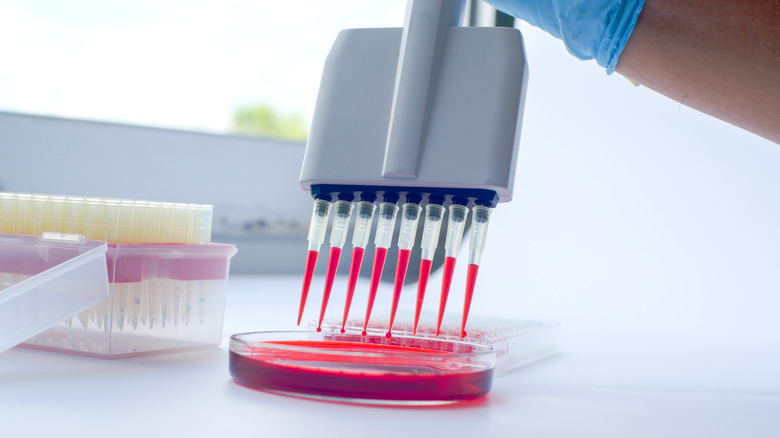What This Doctor Says You Should Know About Lyme Disease
Through scientific research and analysis of insurance claim data collected between 2010 and 2018, the U.S. Centers for Disease Control and Prevention (CDC) now estimates that roughly 476,000 people are diagnosed and treated for Lyme disease annually in the United States. Transferred through the bite of a deer tick, Lyme disease is a bacterial infection that makes its way through the bloodstream attacking various tissues and systems within the body (via WebMD).
According to WebMD, while symptoms can take anywhere from a few days to more than a month to emerge, initial symptoms are often akin to those of the flu, including fever, chills, fatigue, headaches, swollen lymph nodes, and muscle aches. However, the most telling symptom of Lyme disease is the development of a small red rash that progressively expands in size. Starting at around two inches in diameter, the rash can grow to be 12 inches across and may include the emergence of a halo-like ring around it.
Untreated Lyme disease cases may lead to the development of arthritis, brain inflammation, irregular heartbeat, and numbness or tingling sensations in the extremities, among other symptoms (via WebMD). Board-certified integrative family medicine physician Dr. Christine Green wants patients to know that the blood tests used by major laboratories in the detection of Lyme disease often only screen for a bacterial strain known as Borrelia burgdorferi (via mindbodygreen). But there are far more strains responsible for the development of Lyme disease that may be being overlooked.
Some Lyme disease blood tests are more thorough than others
In a Q&A interview with mindbodygreen, Dr. Christine Green shares a wealth of information accumulated over the course of 30 years spent treating patients with tickborne illness. Dr. Green explains that because many laboratory blood tests used to diagnose Lyme disease in patients are only looking for the presence of one Lyme bacterial strain, this can lead to misdiagnosis or lack of treatment if the patient is infected with an alternate, undetected strain.
In a 2014 study conducted by scientists at the University of Pennsylvania, researchers stated within their findings, "At least 16 different strains of the Lyme disease bacterium have been shown to infect humans in the United States, so being [bitten] by a tick carrying a different strain of the disease is entirely possible." For this reason, Dr. Green utilizes laboratories MDL, Galaxy, and Igenex, which test for multiple strains of Lyme bacteria.
However, Dr. Green stresses the importance of physicians using more than one method to make a formal Lyme disease diagnosis, rather than one blood test being the determining factor By assessing patient symptoms, ruling out alternative tickborne illnesses, conducting an extensive review of the patient's medical history, and issuing a thorough physical exam, doctors are better able to determine a Lyme disease diagnosis and prescribe antibiotics based on the progression of the patient's condition.


